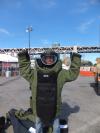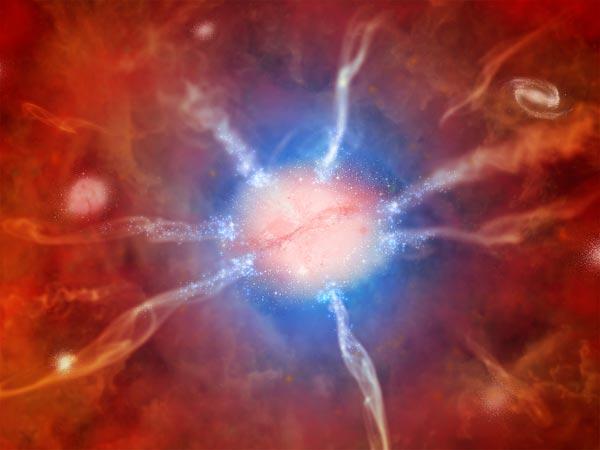| Online: | |
| Visits: | |
| Stories: |

| Story Views | |
| Now: | |
| Last Hour: | |
| Last 24 Hours: | |
| Total: | |
Star Birth Rate of New Galaxy Cluster Stuns Astronomers

By using powerful telescopes, astronomers have made many stunning discoveries recently. One example is of a galaxy cluster called “The Phoenix Cluster,” which is 5.7 billion light-years away from Earth and is forging new stars at an extremely fast rate.
It was reported by the National Geographic Daily News on August 15, 2012, that the astronomers responsible for the discovery found that the Phoenix Cluster’s central galaxy is forging over 740 new stars every year, shattering the previous record of approximately 150 new stars every year. To put this in context our Milky Way Galaxy only forms around one or two new stars per year.
What is confusing astronomers the most is that the central galaxy of this cluster has existed for hundreds of millions of years, and then abruptly started to forge new stars. Therefore, the astronomers named it “The Phoenix Cluster,” just like a Phoenix’s nirvana or rebirth.
Since this newly discovered star birthing rate is so high, and it doesn’t match the average star birthing rate of that galaxy, astronomers were suspicious of the data at first. However, 10 Astronomical Observatory Telescopes and several months of observation data have confirmed that the finding is accurate.
“The discovery of this cluster was a bit of a roller coaster, since with every new observation, we found something even more exciting,” said MIT astrophysicist Michael McDonald, the head of the research project.
Normally, the center of a galaxy cluster is the galaxy’s oldest part, which is red in color, showing that the galaxy has passed the star-bearing age. However, the center of the Phoenix Cluster shines in a bright blue color, which is the characteristic of newly-born stars. Therefore the Phoenix Cluster is quite exceptional.
Translated from: http://www.zhengjian.org/node/112529
Reference: http://news.nationalgeographic.com/news/2012/08/120815-galaxy-massive-na…



